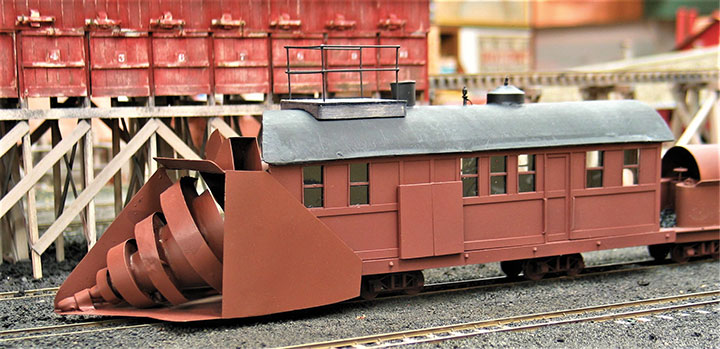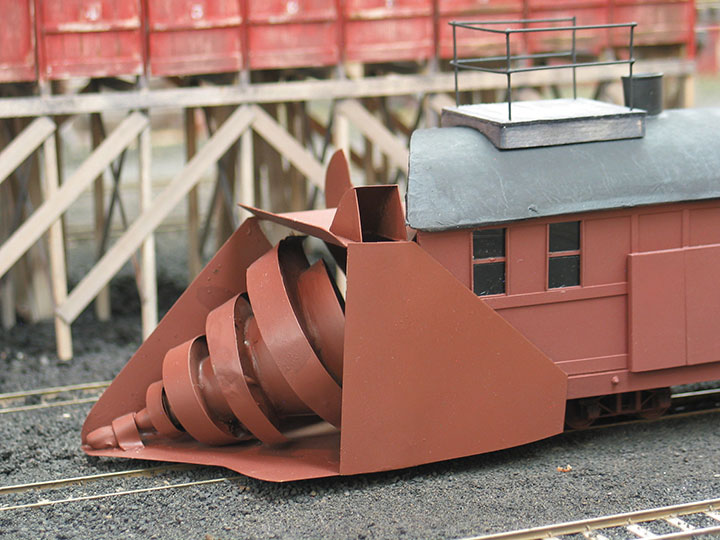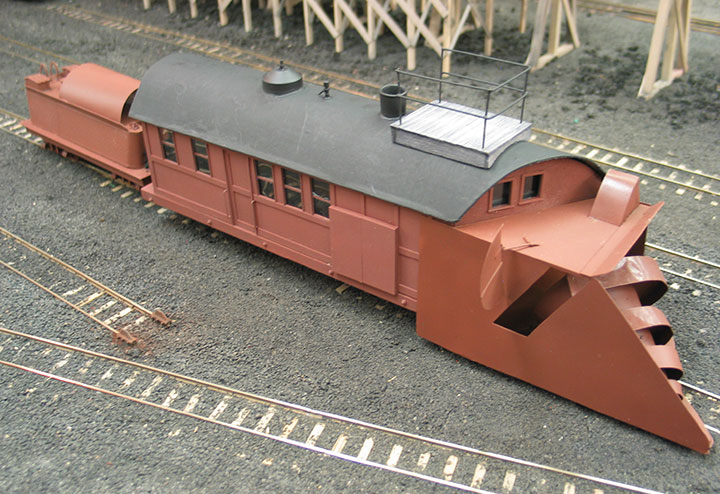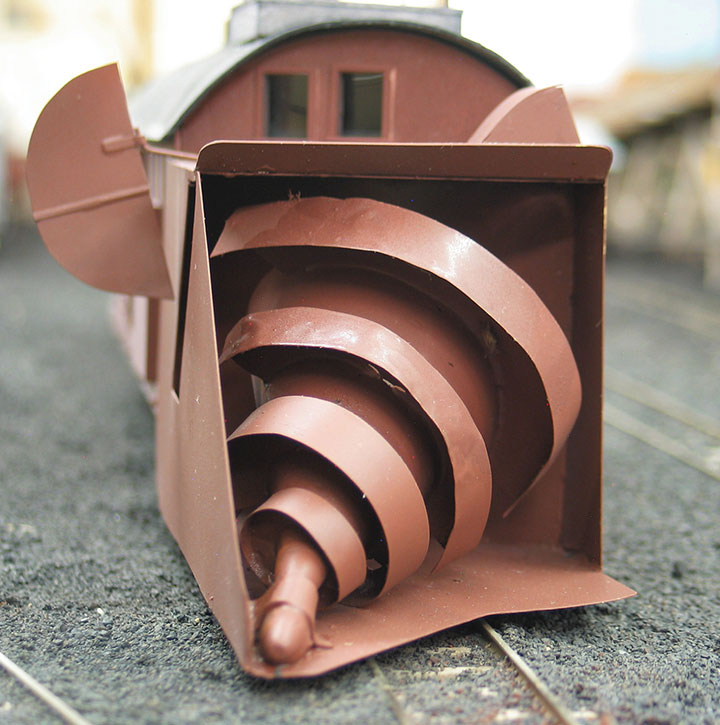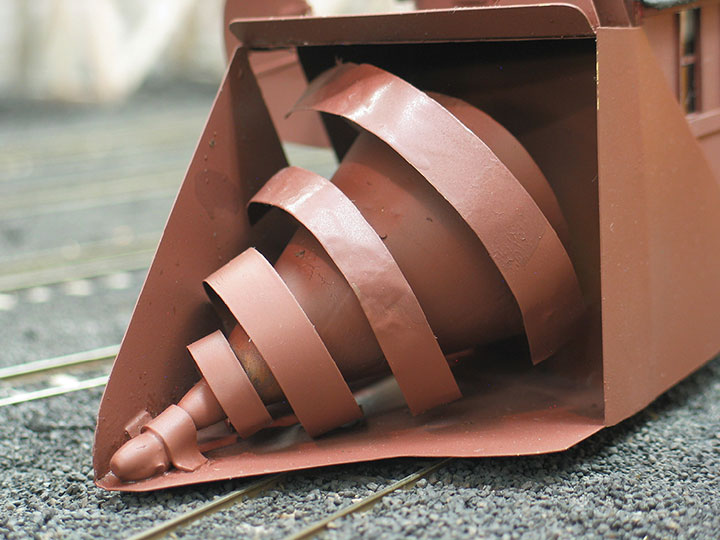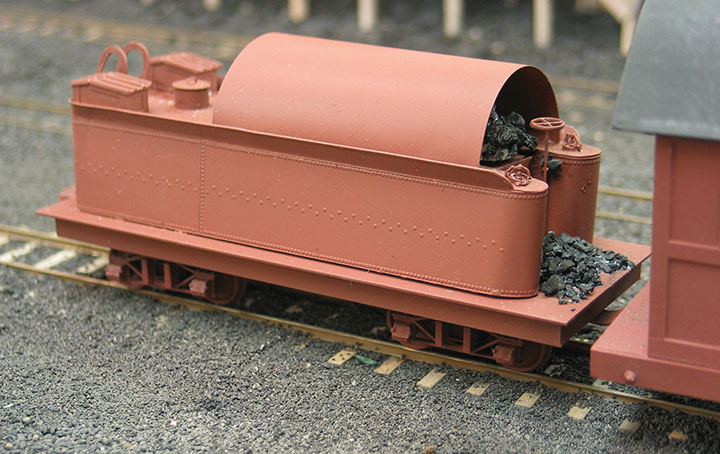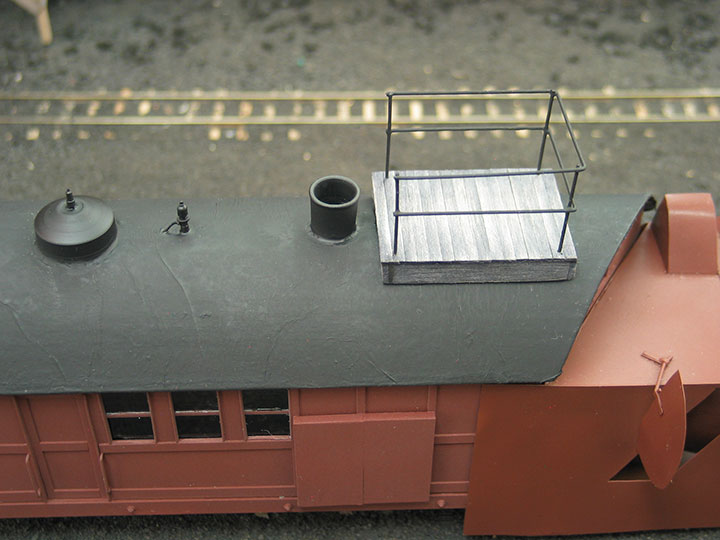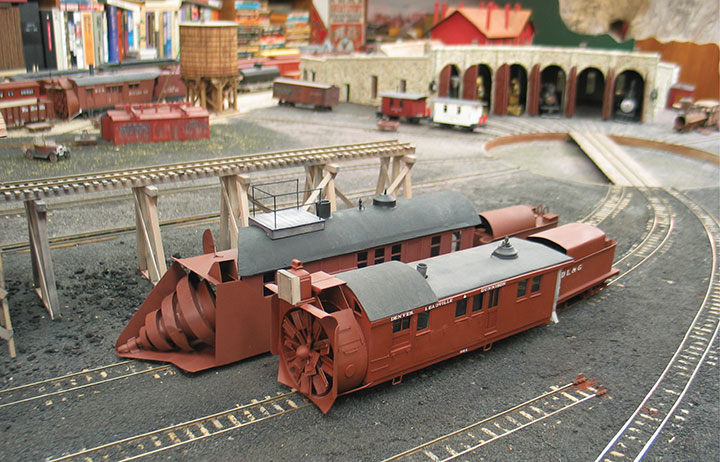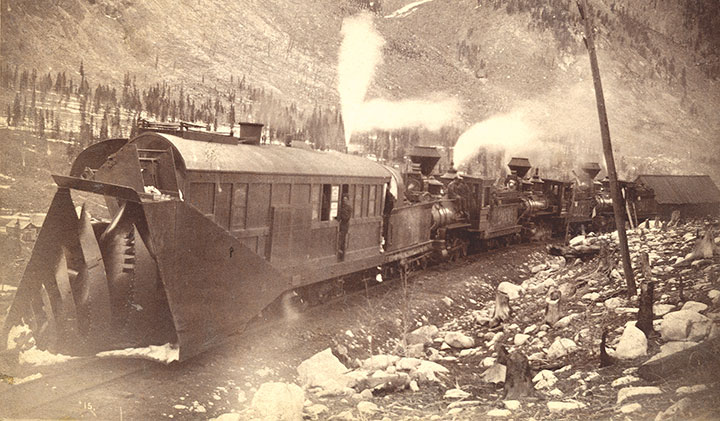This is the final installment in my series on modeling the Jull. It has been an interesting and challenging adventure building such a unique piece of equipment.
Now that construction is finished, painting the model is the final step. I didn’t anticipate any problems and was happy the Hancock Jull didn’t have the name printed on the letterboard. I would have hated to individually letter “Jull Centrifugal Snow Excavator” on both sides.
I airbrushed the model and let the paint set for a few days. I then sprayed a light coat of matte finish to dull the paint, which is my normal routine after painting. I was unpleasantly surprised to see the paint wrinkle and curdle on one of the auger blades. I quickly scraped the area clean and touched up the damaged area. The situation was complicated by the fact that I was traveling in two days and had non-refundable tickets.
I planned from the beginning to paint the auger a different color than the rest of the body, even painting test strips with various shades from different paint companies. As of this writing, I still haven’t made up my mind on the color, but the auger appears to be a darker color in the Jackson photo.
The fact that the Jull was such a failure at the Hancock snowplow trials doesn’t make it any less interesting. If anything, this is why it has become such a South Park legend. The Jull derailed constantly, and Orange Jull finally conceded the contest to the rotary. He blamed the poor track, but other factors were the 4-wheel trucks which were unable to properly support the weight of the heavy mechanism, causing it to derail, especially on curves. The event only lasted 3 days, but the Jackson photos of this strange machine have made a lasting impression on South Park fans.
I suppose it seems odd that I would take the time and make the effort to build a model of something that was only on the railroad for 3 days and never became part of the roster. I’ve been fascinated by the event for years and was determined to model this particular Jull. It took longer than I anticipated, but it was worth the wait to finally build a model of the other competitor in the legendary contest.
I built a model of Denver Leadville & Gunnison #011, the Leslie rotary that competed against the Jull at Hancock. I described this model in the November/December 2018 and January/February 2019 issues of the GAZETTE. It would be fun to have the two snowplows head-to-head in a snow scene on my layout, but I’ll settle for having them side by side at Como.
I knew that making the auger was going to be a challenge, but I didn’t anticipate how difficult it actually became. After my experience fabricating the auger, I’m glad the cone isn’t a common shape on narrow gauge railroads.
I think a return to more traditional model building and working on my layout will be my future projects. But — who knows?
